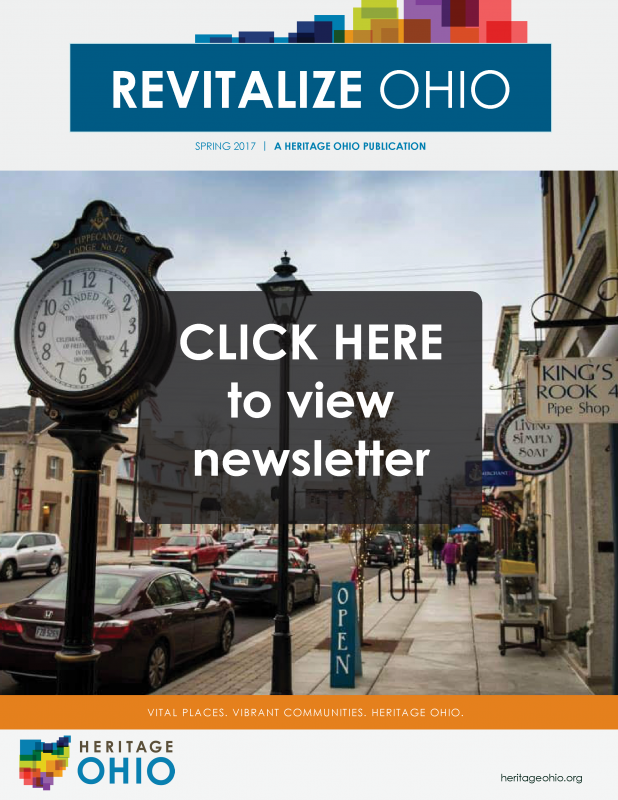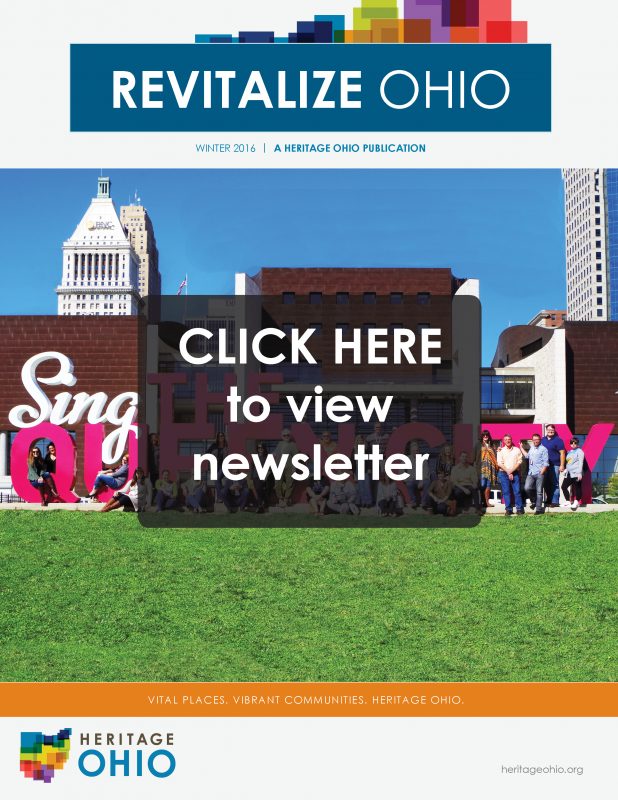2017 Main Street Refresh Workshop
Revitalization Series Summer Workshop
Main Street Refresh
Wooster, Ohio
9/6/2017
The Michigan Main Street Center was the first state-wide coordinating program to roll-out and begin implementing the Main Street Refresh in all 21 of our participating communities. We have developed a multi-step process to guide communities through transformation strategy identification, development, and implementation. During this session, we will take you through a highly interactive deep-dive of the new Main Street Approach as we have implemented it in Michigan. We will share our process, tools and lessons learned so that you will be well equipped to begin implementing this approach in your community, with support from Heritage Ohio.
Additionally, attendees will have the opportunity to explore Wooster, another one of Ohio’s Main Street communities!
![]()
Kettering – Chakeres Theaters Kettering Cinemas I & II
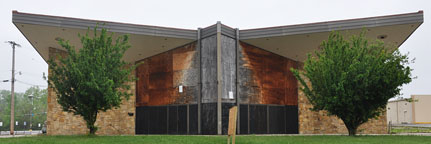
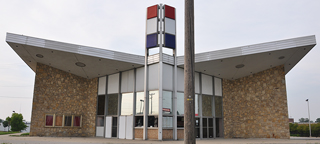
Current Name of Theater: Kettering- Chakeres Kettering Cinema
Chakeres Theatres Kettering Cinemas I & II
Current Type : Cinema
Seats: 800 / 2 screens
Website: no website – now a church
Historic Names of Theater: Kettering Cinemas I & II,
The Cinema North was built in 1967 as the Fox North. It was renamed the Cinema North in 1975
Address: 1441 E. Dorothy Lane, Kettering, OH 45430
Year Built/Style: 1966
Original Architect:
Original Cost:
Listed on National Register:
History of Theater: The Fox Kettering opened for Christmas 1966. It was later owned by Mann Theatres before being sold and twinned by Chakeres Theatres in 1975. Chakeres also changed the name to Kettering Cinemas I & II. This theater is a twin sister to the now closed Fox NorthWest “Cinema North” which was sold by Chakeres Theatres to Showcase Cinemas in April 1988 which is located in Dayton.
Cost of Rehabilitation:
Architect:
Contractors:
Source of Funds:
Renovation Story:
Kettering Cinemas had been a second run theatre since the late-1980’s, but starting November 2004 Chakeres began running Kettering as a first run house with “The Grudge” and “The Incredibles”.
The Kettering was closed in January 2006.
The former Kettering 2 Cinema at 1441 E. Dorothy Lane in Kettering has been sold and will be reborn as a church. The Shelter Community Church, which has outgrown its building at 1541 John Glenn Road in Dayton’s Belmont neighborhood, plans to renovate the 12,680-square-foot building east of the Wilmington Pike intersection and open as a house of workship in May or June 2013.
![]()
Jackson Markay Theater
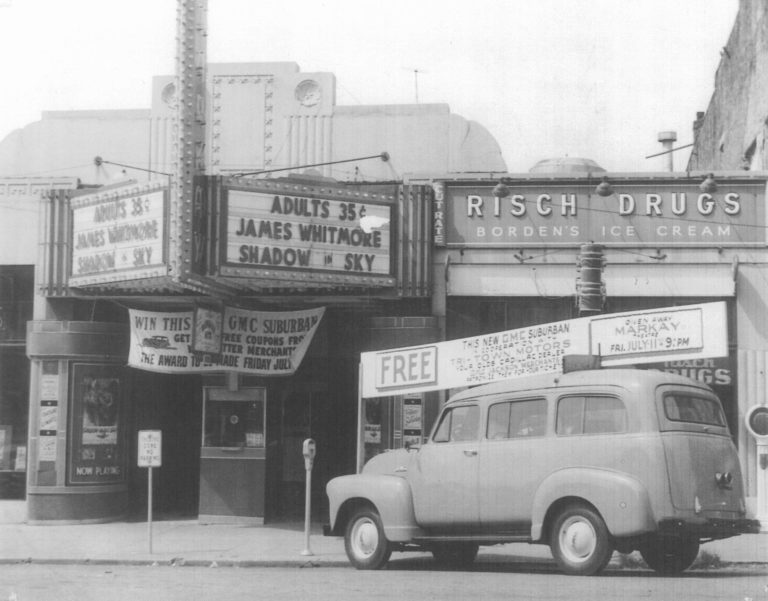
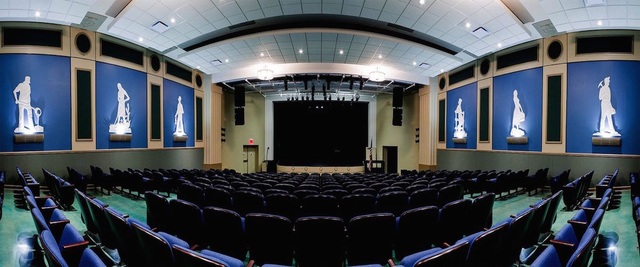
Current Name of Theater: Markay Cultural Arts Center
Current Type : Community cultural arts center operated by the Southern Hills Arts Council. The lobby houses a gallery that is open to the public and available for use by other nonprofit organizations.
Seats: 578 / 1 screen
Website: www.markayjackson.com
Historic Names of Theater: The Markay Theatre was opened prior to 1931. It was operated by Chakeres Theaters in the early-1970’s. In August 2015 it reopened as a live performance venue.
Address: 269-271 East Main Street, Jackson, Ohio 45640
Contact: (740) 577-3841
Year Built/Style: 1930, art deco
Original Architect:
Original Cost:
Listed on National Register:
History of Theater:
Cost of Rehabilitation: an appropriation of $200,000 in Am. Sub. H.B. 16 of the
126th General Assembly
Architect:
Contractors:
Source of Funds:
Renovation Story: The renovation of the 1930 Markay Theatre on Jackson’s Main Street was a long and difficult project undertaken by Southern Hills Arts Council. $2 million was invested to get to the first complete live performance on the Markay’s new stage.
The adventure began in 1996 when then Jackson Mayor Tom Evans, outlined a concept for Council President Maxine Plummer and Executive Director Barbara Summers. According to Evans, the city had the opportunity to take ownership of the Markay but no funds either to tear it down or begin a rehabilitation process. He wondered if the Council might tackle the job of saving this grand piece of Art Deco architecture, once the focal point of life in Jackson.
Southern Hills had been incorporated as a non-profit agency in 1981 but had never established a permanent home. Many avenues were under exploration when Evans presented this opportunity.
By the fall of 1996, a plan had been forged that called for the City to accept the badly deteriorated, long unoccupied building and for the Council to rent the Markay for $1 per year. In return, the Council accepted the responsibility to renovate, maintain, and operate the facility. The Council’s first priority was to stabilize the building. Considering the horrible conditions inside and out, that was no mean feat. The roof was peeled back to the rafters, some repairs made to them, and new roofing membrane installed. The electrical wiring was so dangerous, everything had to be started anew. The same was true for heating and cooling systems.
In planning the project, Council members were clear they would not undertake a restoration to bring the building back to what it had been in 1930 when it first opened under the care of the Jones family of Jackson. The Council would not restore it to the look introduced by the Chakeres Chain when it purchased the Markay in 1940. Instead, the goal was to salvage any original items possible and merge the 1930 and 1940 styles.
From the beginning, one of the biggest champions of the project was John Carey. From his position as State Representative, then Senator, and then Representative, Carey worked diligently to assist Southern Hills in securing funding.
At each step, funds were secured before any work was undertaken. The Appalachian Public Facilities Task Force, State Legislature’s Capital bills, Governor’s Office of Appalachia, Ohio Arts Council, Downtown Revitalization, and Yellow Root Foundation are among funders.
Memorial contributions, gifts of stock and other assets, donations from service organizations, and the generosity of private donors, both large and small, had a major impact on the project. The Council held numerous benefits, raffles, and sales to flesh out the coffers.
By June 1, 1997, a portion of the building was opened as the Markay Cultural Arts Center. The former theater lobby was transformed into a Gallery where visual arts and cultural exhibitions are held. The former commercial space on the south side of the Markay, which once served as a third, small movie theater, was divided to provide a Meeting/Class Room with Lending Arts Library, a unisex, handicapped accessible bath room, a small kitchen to host receptions, and an office.
Council members then focused on the Auditorium. This space had been “twinned” allowing two movies to be shown at once. The make-shift center wall, make-shift movie screens, and years of accumulated debris were cleared out using over 200 man hours of volunteer labor. Six dump trucks were neatly stacked with trash and carried away. When the dust cleared, members assessed the situation and developed a step-by-step plan to turn the space into something suitable for live performances in theatre, dance, and music. Another goal was the installation of a retractable projection screen and digital projector to view classic films. In addition, they vowed to create a hospitable venue for training, lectures, seminars, and other public and private meetings to serve the needs of area citizens.
A key element in this plan was saving the six life-sized bas-relief sculptures on the walls of the Auditorium. It was clear that years of neglect had caused serious damage to these figures. The roof directly over the woman carrying a basket of apples from an orchard had a huge hole in it. Water poured down the walls and had dissolved her head. She was gone from the knees down. A sodden lump on the floor revealed the toe of one shoe but the rest was a gluey mess. The elements poured through another hole in the roof on the other side of the Auditorium but missed hitting the Foundryman. Over the years, the water ran down the sloped floor and into the poured concrete basement which contained the coal fired boiler and coal bins. It was a dark and slimy mess.
After a three year search, Council members were satisfied that Laurie Booth, of Midwest Conservation Services, could restore the sculptures. Her team carefully removed them from the walls and sped off to Columbus for restoration. When Laurie relocated to Cleveland, the fully restored bas-reliefs went with her to be kept in climate control until the Auditorium was ready for them.
Meanwhile, work continued in the Auditorium. Workers scurried to clear 200 tons of debris from under the concrete stage. The old coal fired boiler and coal bins were removed. Perimeter drains, new floor, new walls, new heating and ventilating system, and such were added to create dressing room space for men and women as well as a complete bathroom and tiny “green room” directly under the poured concrete stage.
In the Auditorium, everything was stripped back to the bare walls. A new contoured floor was poured, new ceiling, new walls, new electricity, and new heating and ventilating system were installed. A space was created for Box Office and Technical Booth.
With a bequest from the estate of the late Dr. Lloyd Allen Smith, the Walnut Hills Neighborhood Box Office area was born. A transition from the Gallery to the Auditorium, this area is done in the Art Deco style.
John Matz, of Sunflower Glass Studio, in Amesville, worked for months with Board members to create spectacular 3 layer glass panels that flank the Box Office window. The panels are reminiscent of the etched glass that filled this space in 1930. At that time, no one was permitted to enter the theatre until seated by an usher. All late-comers waited until a respectable intermission before being seated. They looked through the etched glass to the screen while waiting.
Included in this phase were a brand new handicapped accessible men’s room and an extension of nearly 1,000 square feet of playing space to the poured concrete stage. A wheelchair lift makes the stage accessible to all.
When word came in from Laurie Booth that she was closing her business and the bas-reliefs had to be moved, Board members weighed their options. They could find a new storage facility or take the project another giant step forward by finishing the walls and bringing the sculptures home to the Markay. Of course, they chose to move forward as quickly as possible. The Auditorium’s concrete floor was ground down to reveal a bit of aggregate, stained with a “Copper Patina” and highly polished. Acoustical panels that mirror the rectangle and circle on the Markay’s façade were created and installed. An acoustical chair rail was installed. A striking blue was painted onto the walls where the sculptures would go. Mike Simmonds recreated the original sconces to mask the light source beneath the sculptures. Pilasters to match those on the front of the building were created. Paint colors from outside were used in the interior.
In March 2012, a crew from Midwest Fine Arts Transport installed the sculptures. The results are startling. These six larger-than-life sized figures represent life in Jackson County in 1940. The men are a Railroader, Coal Miner, Foundryman, and Farmer. The women are hoeing in a garden and carrying apples out of the orchard. In fact, these figures are so representative of life here, they were later etched into the abutments of a bridge crossing Route 35 near McCarty Lane, south of Jackson.
The next step in the renovation saw the installation of an outstanding floor shipped in from Dance Equipment International in California. Once that was in place, Janson Stage Equipment, of Canton, arrived to measure and create three sets of black velour curtains. They look spectacular and allow us to create entrances and exits for performers. The curtains can also be arranged to create a cyclorama effect that will provide the perfect backdrop for small groups such as chamber orchestras and will be ideal when workshops and seminars are held in the auditorium.
Thanks to a splendid donation by the Stockmeister Family Fund the component parts of a state-of-the-art sound system were purchased. Robert Allen and Eric McKinniss of the band “Crossroad Station” volunteered untold hours to install the system.
Chris McCain, electrician at Stockmeister Enterprises, tackled the restoration of the four original octagonal chandeliers. They were black and bent and many parts were not where they belonged. Like assembling a three dimensional jig saw puzzle, Chris put the pieces back together. He stripped and highly polished the brass and gave it a good coating. Chris completely rewired the chandeliers, hung them from the ceiling and wired them into the technical booth. Meantime, Greg Hogue, of the Glass Garage, tackled the glass. When we tried to clean the original remaining glass, it crumbled in our hands. It was time for 64 brand new panels of acid etched glass. Half of it went to Texas to be bent to fit the vertical area. The remaining flat, pie shaped wedges went to Jackson Monument to have the original floral/ribbon pattern sand blasted into them. Greg spent two days, going up and down in a scissor lift, to individually cut and install the glass.
On August 1, 2015, we triumphantly opened the theatre for live performances.
Adapting a poured concrete space built to show movies to serve the needs of live theatre proved to be quite a challenge. We suspect there will always be more to do in keeping a 1930 building fit for use in this century and well on into the future. At every turn, the Council has worked to restore those precious parts of our past so they are not lost to us or our children and their children. To the best of our ability, we have created a modern, comfortable space in which to enjoy the performing arts.
![]()
Cleveland Capitol Theater
Historic Theaters
CASE Studies
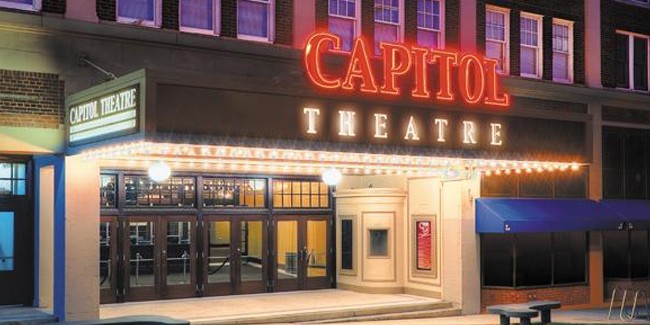
Current Name of Theater: Capitol Theatre
Current Type: Cinema
Seats: 1,200
Website: dscdo.org/capitol_theatre.aspx and clevelandcinemas.com/location/20340/Capitol-Theatre-Showtimes
Historic Names of Theater: Capitol Theatre
Address: 1390 West 65th Street, Cleveland, OH
Contact: (216) 651-7295
Email: dhuffman@clevelandcinemas.com
Year Built / Style: April 8th 1921 / Neo-classical
Original Architect / Developers: West Side Amusement Co. and Canadian motion picture theater promoters Jule and J.J. Allen
Original Cost:
Listed on National Register:
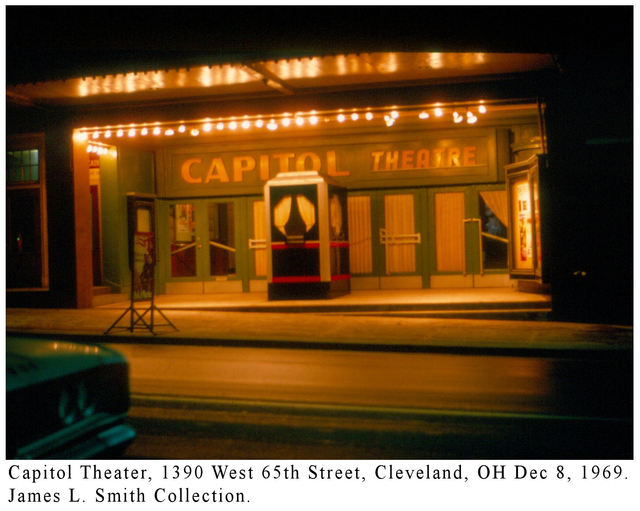
History of Theater
On April 8, 1921, the Capitol Theatre opened its doors to the public at the dedication of the Gordon Square Arcade and Community Building. Developed by the West Side Amusement Co. and Canadian motion picture theater promoters Jule and J.J. Allen, the theater began as a vaudeville and silent film house. During the surrounding neighborhood’s prosperous years, the theater remained a centerpiece of Gordon Square. The arcade and theater slowly fell into disrepair, though, following the outmigration of both Cleveland residents and businesses following World War II.
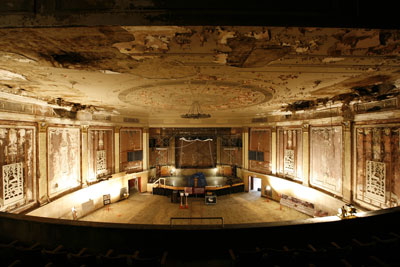
Renovation Story
In 1978, the parapet of the Gordon Square Arcade collapsed and damaged the marquee. Plans were quickly prepared for the demolition of the building. Although the building itself was spared through the efforts of the Detroit Shoreway Community Development Organization, the Capitol Theatre eventually closed down in 1985 due to years of deterioration. With the revival of the Detroit Shoreway neighborhood and the designation of the Gordon Square area as a cultural arts district, the theater was renovated and reopened in 2009. It is now owned by the Detroit Shoreway Community Development Organization and operated by the Cleveland Cinemas.
Detailed wall murals, classically-inspired architecture, and original light fixtures have been restored to recreate the atmosphere of the 1920s-era movie palace, but with all the amenities of 21st century technology.
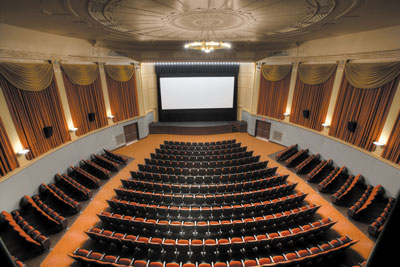
Cost of Rehabilitation: part of a $250,000 appropriation
Architect:
Contractors:
Source of Funds:
![]()
Emerging Professionals Scholarship
It is back for the second year! Thanks to the continued support from Schooley Caldwell, this year will see the return of the Emerging Professionals Scholarship contest and conference session.
 Scholarship winners will receive the opportunity to present a mini-presentation on their preservation work, 2-nights at the conference hotel, up to $100 travel reimbursement, and complimentary conference registration. Winners will be announced in early August, and all applicants will receive early bird conference registration code if not selected. There are two scholarship opportunities for the 2017 Heritage Ohio Annual Conference.
Scholarship winners will receive the opportunity to present a mini-presentation on their preservation work, 2-nights at the conference hotel, up to $100 travel reimbursement, and complimentary conference registration. Winners will be announced in early August, and all applicants will receive early bird conference registration code if not selected. There are two scholarship opportunities for the 2017 Heritage Ohio Annual Conference.
No fee is required to apply, however, support from our members allows us to continue helping Ohioans to save the places that matter; build community; live better. Please consider joining here.
Proposals will be accepted until 5 PM on Friday, July 28th.
![]()
Sash Mob! Windows Workshop
|
Join us May 19-21 for this awesome wood windows workshop weekend!
Heritage Ohio is partnering with Marsh Building Products, Marvin Windows and Doors, Habitat for Humanity Cincinnati, and Community Matters to teach window restoration while giving back to Lower Price Hill
They’re caked with paint, riddled with cracked glass, drafty, and they’ve been stuck shut longer than you’ve been alive. If we’ve described the window situation in your historic house, then it’s time to do something about it, and we don’t mean replace them. Heritage Ohio is excited to announce that we’re bringing old windows guru Jim Turner back to Ohio to help us conduct a #SashMob2017 in Cincinnati in May, and you’re invited.
Continuing Education
This 3 day workshop series offers up to 20 AIA HSW continuing education credits in total!
Friday Sessions
The sessions taking place on Friday the 19th will be classroom style and cover everything you need to know about wood windows, including how you can make them more energy efficient without replacing them and how to be safe when dealing with the potential of lead paint. Considering a restoration project? Don’t miss Chick McBrien, Marvin Windows and Doors, talk about research, planning, window assessment, standards, and historic tax credits with concern to historic restoration projects.
We will have window restoration specialist and National Trust Advisor Jim Turner, of Turner Restoration, talk about window restoration and will be available at the end of the day for an “Ask an Expert” session. If you have old windows that you would like to get advice on or an expert’s opinion about, please bring your pictures and your information with you to this workshop and ask Jim! He can answer your questions about both wood and steel windows. If you don’t need expert advice than you can join us for a tour of the Community Matters complex and learn about the amazing projects and work that this organization has been able to do in the Lower Price Hill neighborhood.
Find more information and register for Friday HERE!
Friday Night
Join Heritage Ohio and the Cincinnati Preservation Collective for a happy hour at The Mockbee! As part of the Sash Mob! Windows Workshop Weekend these preservation forces are teaming up to welcome the many preservation professionals from across the nation, who are coming to work in the great city of Cincinnati.
The happy hour will start at 6 pm with a tour of this fantastic building and we will wrap up the night by 9 pm. After all, we have some windows to save the next morning!
Saturday and Sunday Hands-On Workshop
If you’ve ever wanted to learn about making your old windows functional, energy efficient, or just more attractive; or, if you’re ready to tackle your own windows DIY project, but don’t know where to begin, then the weekend hands-on workshop is the answer for you! Over the course of two days May 20 and 21 you will learn about:
– the basics of window anatomy,
– freeing up you stuck windows,
– installing weather stripping,
– repairing weight ropes and chains,
– cutting and replacing glass, and
– re-glazing window sash.
Window restoration specialist and National Trust Advisor Jim Turner, of Turner Restoration, will lead the workshop.
Find more information and register for the weekend HERE!
Event Location
Friday’s sessions and portions of the weekend workshop will take place at The Sanctuary at Community Matters. The majority of the weekend workshop will take place at two buildings nearby where we will be restoring windows on-site.
Community Matters- 2110 St Michael St, Cincinnati, OH 45204
![]()
Stoddart Block Easement
260 S 4th St,
Columbus, OH 43215
In December of 2013, Heritage Ohio received a conservation easement on the Stoddart Block, and the adjoining Zettler Building, in downtown Columbus. For a building that began life as a furniture store, the newest chapter in its history would depend on millennials in search of a vibrant downtown.
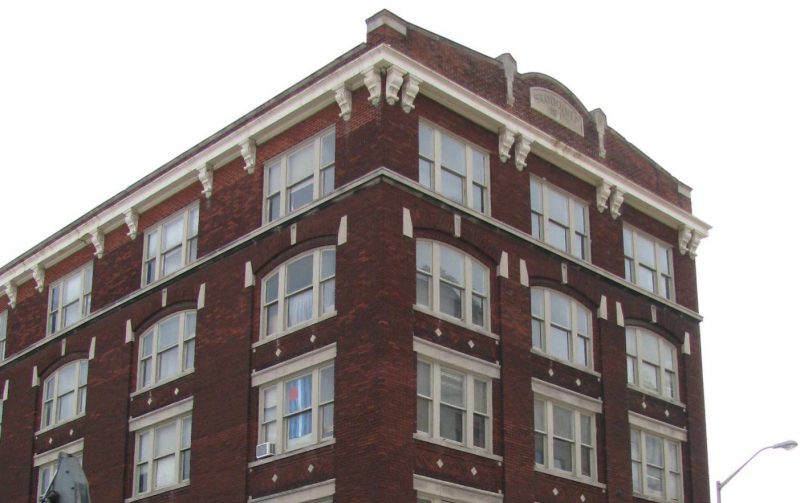
As millennials continue to descend on downtown locations to live (and Columbus is no different than other big cities) the cost of prime downtown rentals continues to increase. To stem the rising rental cost, developers have turned to a new model: micro-living.
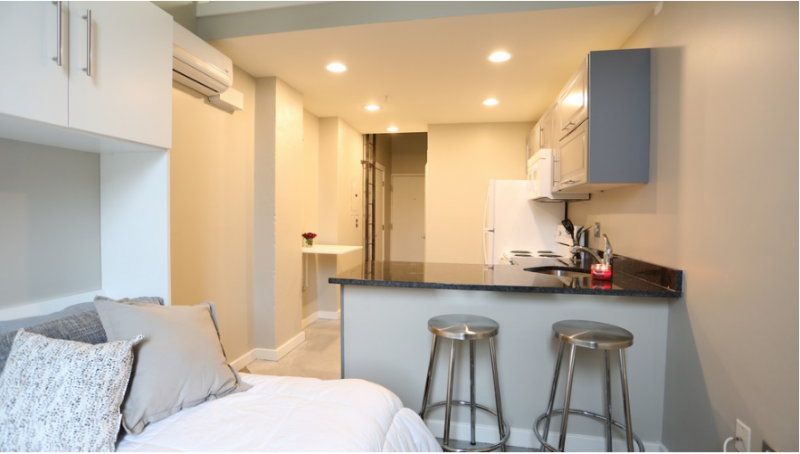
Trading off a living room in your apartment with a downtown “living room” full of entertainment options, the apartments’ modest square footage is ideally suited for the typical 20-something that hasn’t accumulated a lifetime of stuff or children! And pricing remains affordable—you can net a downtown Columbus address for less than $1,000 a month.
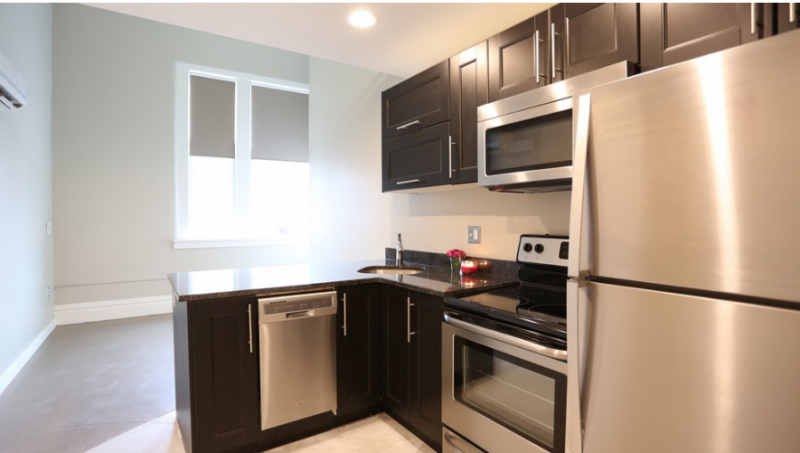
Beginning its existence as the Frohock Furniture Company, the building was well-suited for a conversion to residential use. From a financial standpoint, granting a conservation easement to Heritage Ohio provided the charitable deduction to the building owner that ultimately helped the project move forward. However, both the federal and state tax credits also provided critical sources of capital to make the project a reality.
Commented director Joyce Barrett, “The Stoddart and Zettler renovations brought new downtown living options, and a couple popular eateries, but also showed how historic buildings created for a specific use can be creatively repurposed to meet today’s needs.”
For more information on Heritage Ohio’s easement program, contact Frank Quinn at fquinn@heritageohio.org or at 614.258.6200.
![]()
USDA Rural Business Development Grants Webinar
March 8, 2017 1 pm – 2 pm
The USDA Rural Business Development Grant is a competitive grant designed to support targeting technical assistance, training, and other activities leading to the development or expansion of small and emerging private businesses with fewer than 50 employees and less than $1 million in gross revenue, located in rural areas. Program activities are separated into enterprise or opportunity grant activities. Cindy will review the toolkit, scope of work and forms required for the USDA grant submission, how to leverage your project and the scoring structure.
The next round of grants is due March 31, there is still time.
Heritage Ohio Members Register Here
Not a Member? Join Heritage Ohio now to get access.
PRESENTER BIO
Cindy Musshel began working for USDA Rural Development in June 2008. She started as a student trainee working in the Guarantee Housing Section. She graduated from The Ohio State University in March 2009 with a degree in Agricultural Business and Applied Economics minoring in Consumer Affairs. After graduation, she was offered a full-time position as a Guaranteed Housing Technician. She was transferred into the SKEP program for 120 days and then became a full-time employee in June 2009. She moved over to Business and Cooperative Programs in May 2010 as a Business and Cooperative Programs Technician. In December 2014 she became a Business and Cooperative Programs Specialist and in October 2015, she became the Program Lead for the Rural Business Development Grant (RBDG). RBDG is a competitive grant designed to support targeted technical assistance, training and other activities leading to the development or expansion of small and emerging private businesses in rural areas that have fewer than 50 employees and less than $1 million in gross revenues. Programmatic activities are separated into enterprise or opportunity type grant activities. Outside of work she enjoys the outdoors and spending time with my family and friends.
![]()
Farmer's Markets Webinar
February 15th, 2017, 1 pm – 2 pm
What makes a farmers’ market successful? And what does success look like? Attracting customers and vendors is a key to managing a successful farmers’ market. Join us to learn best marketing practices for not only attracting customers but quality vendors as well. You will learn practical tips and strategies you can implement at your farmers’ market.
Heritage Ohio Members Register Here
Not a Member? Join Heritage Ohio now to get access.
PRESENTER BIO
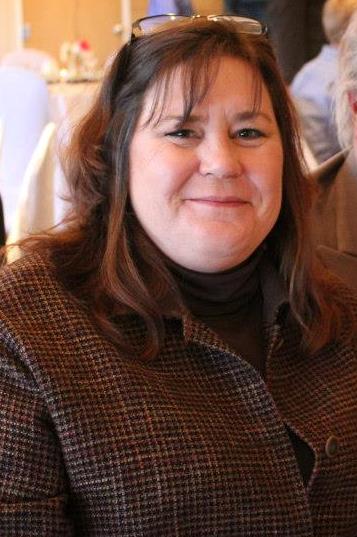 Christie Welch serves as the Direct Agricultural Marketing Specialist for OSU Extension where she leads a team to provide information and education on all aspects of marketing to Ohio’s farmers and producers. Programs include MarketReady™, DeviceReady, Meet the Buyers, and best marketing practices. Ms. Welch has a strong interest in the economic development of rural Ohio and is especially interested in family farms and agribusinesses within this region.
Christie Welch serves as the Direct Agricultural Marketing Specialist for OSU Extension where she leads a team to provide information and education on all aspects of marketing to Ohio’s farmers and producers. Programs include MarketReady™, DeviceReady, Meet the Buyers, and best marketing practices. Ms. Welch has a strong interest in the economic development of rural Ohio and is especially interested in family farms and agribusinesses within this region.
She and her husband are the third generation on their diversified family farm. They currently produce plasticulture strawberries which they direct market through pick-your-own and retail sales on the farm. They have been actively involved in the Chillicothe Farmers’ Market where she served on the board for 8 years.
![]()









